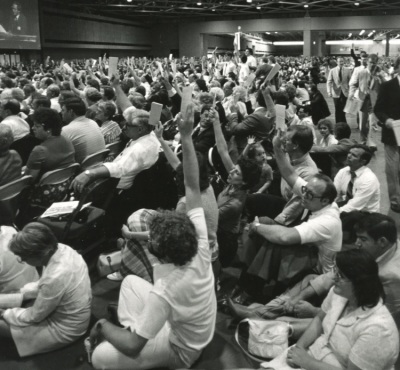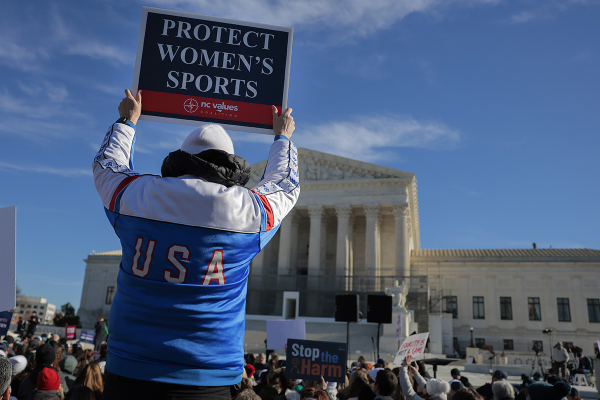Reform movements and false comparisons: Southern Baptist case study

Last week a news story appeared in The Christian Post, “What Does It Mean to be a Southern Baptist Living in 21st Century America?”, which contained my responses while answering questions during a symposium on “Baptist Political Theology” sponsored by the Land Center for Cultural Engagement at Southwestern Baptist Theological Seminary in Ft. Worth, Texas.
In that news article, I outlined the theological struggle within the Southern Baptist Convention (SBC), the nation’s largest Protestant denomination, during the latter third of the 20th century (the 1970s, 80s, and 90s). I explained that the contest to determine the future course of the SBC was best summarized as a struggle involving five identifiable groups, not the more generally recognized two groups — conservative and moderate-liberal.
As I explained at the symposium, the five groups of Baptists were:
“Group 1 — fundamentalists who did not desire much contact with non-inerrantists; Group 2 — inerrantists who believed there needed to be a course correction of a drift away from theological conservatism, but were willing to work with some who denied inerrancy, as long as they were not driving the bus; Group 3 — inerrantists who believed there did not need to be a denominational course correction, or the course correction had gone far enough, or the course correction had gone too far, sometimes the same people at different stages of the resurgence; Group 4 — moderates who still believed people needed to accept Jesus as Savior, but believed the Bible had mistakes and errors, and sections ‘which weren’t up to the standards of Jesus’; and Group 5 —recognizable liberals who denied miracles and some who denied a literal resurrection.”
I have had several people contact me since The Christian Post article appeared, asking me variations of the same question, “Did the ‘Conservative Resurgence’ really make a difference? Was it worth all the sacrifice?”
Let me preface my answer to that question by observing that one of the most valuable gifts of the length of years is historical perspective. When you are 76 years old, as I am, you realize you have experienced eight decades and four generations (if you consider a generation as 20 years). Frankly, this does give you a historical perspective that is extremely valuable in providing context for both historical and current events.
For example, the ‘Conservative Resurgence’ did not start in 1979, it just went public that year. I was a seminary student in a Southern Baptist Seminary (New Orleans Baptist Theological Seminary, 1969-1972) and my wife was a seminary student at the same seminary (1968-1970) and the departures from Southern Baptist theological or orthodoxy taught in seminary classrooms in New Orleans (and it was one of the more conservative of the six Southern Baptist seminaries) was a daily subject of discussion in the seminary cafeteria.
Any fair-minded person would have to acknowledge that there had been a significant theological drift from historic Southern Baptist orthodoxy in the 1960s and early 1970s.
In fact, as my wife and I rode the escalator up to the Convention Hall to vote in the presidential election at the Southern Baptist Convention meeting in San Antonio in 1988, my wife said to me, “This is the culmination of all the stuff we used to discuss and complain about all the time in the seminary cafeteria, isn’t it?”
My answer was, “Yes, it is. You know how we used to say if the people in the pew knew what was being said about the Bible in these classrooms, they would have a duck. Well, they found out and they had a whole flock of ducks.”
The bigger question, however, is, “was the Conservative Resurgence worth it, and was it a success?” The answer to that question requires historical context. First, the Conservative Resurgence was not a “revolution,” but a conscious attempt at theological “restoration,” which is a very different thing. The supporters of the resurgence wanted to restore a comprehensive theological conservatism in the educational institutions and mission agencies of the denomination.
This should not be confused as an attempt to restore either a Southern provincialism or racial segregation. In fact, leaders of the Conservative Resurgence (W. A. Criswell and Jack Graham) were among the strongest supporters of the failed attempts to change the name of the convention to a more inclusive national or continental description and resurgence leaders were also deeply involved in racial reconciliation initiatives.
For more detailed information on why the Conservative Resurgence happened and how it unfolded over the years, see Nancy T. Ammerman, Baptist Battles:Social Change and Religious Conflict in the Southern Baptist Convention (1990) and Jerry Sutton, The Baptist Reformation: The Conservative Resurgence in the Southern Baptist Convention (2000). Ammerman’s analysis is less sympathetic to the resurgence while Sutton’s was more so.
The bigger question I was asked (and I get some version of this question with some regularity) was: “There are still problems in the convention, and many things are not the way I envisioned they would be when I was ‘fighting the good fight’ for the Bible’s inerrancy. Was it worth it? Did it do any good?”
My answer was, and is, that first and foremost, you must not make the serious error of comparing the convention the way it is to the way it was, versus the way you had hoped it would be.
This type of comparison is a common fallacy and leads people to make erroneous conclusions. To truly assess a movement you have to compare a convention, an organization or a political movement, not with the way it is after the reform movement, BUT THE CONDITION IT WOULD BE IN IF THE REFORM MOVEMENT HAD NOT TAKEN PLACE.
Is the Southern Baptist Convention exactly where I hoped and envisioned it would be in 2023 when I joined in the effort at its inception in the 1970s? No, it is not.
However, that is the wrong question. The most important question is where would the Southern Baptist Convention be in 2023 if the Conservative Resurgence had not successfully taken place?
If the Conservative Resurgence had not taken place, the Southern Baptist Convention would have continued its theological drift and Southern Baptists would be experiencing the same theological division that is currently hemorrhaging American Methodists.
When I went to seminary in 1969, it was widely understood among conservatives that Southwestern Seminary in Ft. Worth and New Orleans Seminary were the only two of the six seminaries where conservatives would be somewhat comfortable. By the time two of my three children felt led to attend seminary, my wife and I could recommend all six seminaries and they both attended a seminary (in the 1990s) considered among the most liberal in 1979 (Southeastern Baptist Theological Seminary in Wake Forest, North Carolina) and they both were well-pleased with their seminary experience.
Just this past week, I was reminded of the enduring impact of the Conservative Resurgence. I was reading “X” and came across this message from Dr. Andrew T. Walker, an Ethics Professor at Southern Baptist Theological Seminary who posted the following text:
“A hermeneutical principle I lay down in my ethics classes relevant to today’s discussion about doctrine and ethics:
If Scripture hands down an ethical imperative, even if it seems at first blush to strike us as counterintuitive or impossible or difficult, we must confess this: The shape of Scripture’s moral commands — issuing from a good God— are always there to bless us and never curse us.
The cross is indeed heavy, but it is never less than always good.”
I can assure you it would have been quite difficult to find many ethics professors at our Southern Baptist seminaries who would have made such a reverential statement about scripture in 1979.
I for one am profoundly grateful to God for the victories won, even if the reforms were not fully fulfilled.
Constant vigilance is the price you must pay for genuine theological orthodoxy, and I for one am happy to pay it and I am thrilled that so many of my fellow Southern Baptists have been willing to pay it as well.
Dr. Richard Land, BA (Princeton, magna cum laude); D.Phil. (Oxford); Th.M (New Orleans Seminary). Dr. Land served as President of Southern Evangelical Seminary from July 2013 until July 2021. Upon his retirement, he was honored as President Emeritus and he continues to serve as an Adjunct Professor of Theology & Ethics. Dr. Land previously served as President of the Southern Baptist Convention's Ethics & Religious Liberty Commission (1988-2013) where he was also honored as President Emeritus upon his retirement. Dr. Land has also served as an Executive Editor and columnist for The Christian Post since 2011.
Dr. Land explores many timely and critical topics in his daily radio feature, “Bringing Every Thought Captive,” and in his weekly column for CP.





















